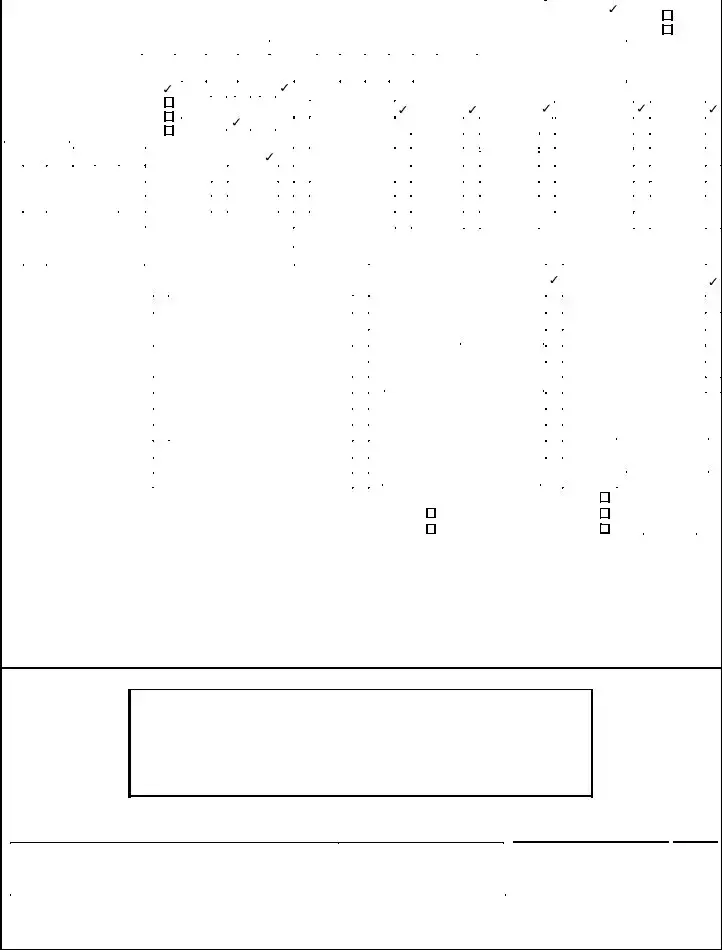BIAS INCIDENT OFFENSE REPORT INSTRUCTIONS
A. PURPOSE OF THE REPORT:
1.The Bias Incident Report shall be used to report any of the below listed offenses which occur to a person, private property, or public property on the basis of race, color, creed, ethnicity, religion, sexual orientation, gender or handicap. An offense is bias based if the motive for the commission of the offense is racial, religious, ethnic, sexual orientation, gender* or handicap. The Bias Incident offenses are:
1. |
Murder |
7. |
Larceny-Theft |
12. |
Damage to Property; Threat |
16. |
Trespass |
2. |
Manslaughter |
8. |
Simple Assault |
|
of Violence (Ethnic Terrorist |
17. |
Disorderly Conduct |
3. |
Rape* |
9. |
Fear of Bodily Violence (Ethnic |
|
Statute NJS2C:33-11) |
18. |
Harassment |
4. |
Robbery |
|
Terrorist Statute NJS2C:33-10) |
13. |
Weapons Offenses |
19. |
Desecration of |
5. |
Aggravated Assault |
10. |
Arson |
14. |
Sex Offenses (except Rape)* |
|
Venerated Objects |
6. |
Burglary |
11. |
Criminal Mischief |
15. |
Terroristic Threats |
20. |
All Other Bias Incidents |
2.A Bias Incident Offense Report must be submitted for each victim of a bias incident. In multiple victim situations, a separate Bias Incident Report must be submitted indicating the same case number in block number one (1). If the target checked in ''Block 8'' is private property or public property, then only one report per incident is required. * See Note: C-10 Below.
B.MECHANICS:
3.The completed Bias Incident Offense Reports must be forwarded to the State Police Uniform Crime Reporting Unit, along with all other UCR monthly reports by the seventh day after close of the reporting period.
C.INSTRUCTIONS FOR THE PREPARATION OF THE BIAS INCIDENT OFFENSE REPORT:
1.CASE NUMBER - enter investigation report number; if none, enter operations report number or other available identifying number. Check the appropriate block to indicate whether this report is an original or update report of a bias incident.
2.MUNICIPALITY - enter name of municipality where offense occurred.
3.MUNICIPALITY CODE NUMBER - enter four digit municipality identifier code.
4.O.R.I. NUMBER - enter nine digit police agency O.R.I. number.
5.S.P. STATION - enter State Police station reporting offense (for State Police use only).
6.S.P. CODE - enter State Police station code number (for State Police use only).
7.DATE OF BIAS INCIDENT - enter date of bias incident.
8.INCIDENT TARGET - Check only one. Check appropriate block to indicate whether the target of the bias incident was a person, private property, or public property.
9A. ORGANIZED GROUP - check appropriate block to indicate whether the bias incident was committed by an organized group, e.g. Ku-Klux-Klan, Aryan Nation, etc. Also, indicate in ''Remarks'' (Block 21) the name of the organized group.
9B. GANG - Check appropriate block to indicate whether the bias incident was committed by a gang, defined as a group of people that form an ongoing, mutual allegiance in response to various social needs and engage in criminal activities and actions harmful to public health, safety, and morals, e.g., skin heads, etc. Also, indicate in ''Remarks'' (Block 21) the name of the gang.
10.TYPE OF BIAS INCIDENT - Check only one block. Check appropriate block to indicate whether the bias incident was racial, religious, ethnic, sexual orientation, gender or disability. Note: If the Bias Incident was disability-motivated, check either physical or mental. If the ethnic block ''other'' is checked, describe in ''Remarks'' (Block 21). Note: The Block Anti-Gender does not apply when ''Type of Bias Incident Offense'' (block 14) is checked Rape or Sex Offense.
11.VICTIM -This block should only be completed if ''Target'' (Block 8) is checked ''Person.''
a.Age - enter age of victim.
b.Sex - enter sex of victim.
c.Race - enter race code of victim - (use code number 1 through 4 as listed in Block 10 - ''Racial'').
12.OFFENDER - This block should only be completed if ''Disposition'' (Block 19) is checked ''Arrested'' or ''Exceptional Clearance.'' List only one offender. List all additional offender(s) age, sex and race in ''Remarks'' (Block 21).
a.Age - enter age of offender.
b.Sex - enter sex of offender.
c.Race - enter race code of offender - (use code number 1 through 4 as listed in Block 10 - ''Racial'').
13.DESCRIPTION OF INCIDENT - check appropriate block to indicate the manner in which the bias incident was committed.
14.TYPE OF BIAS INCIDENT OFFENSE - Check only one offense. If more than one offense occurred (multiple offenses), count only one. Check the first offense only by going down the list from 1 to 20.
15.PLACE OF OCCURRENCE - check appropriate block. If Blocks 5 or 10 are checked, indicate on the line provided a description of the premises. If additional space is required, use Block 21.
16.RELATIONSHIP OF VICTIM TO OFFENDER - check appropriate block.
17.TOTAL NUMBER OF - enter total number of victim(s) and offender(s) involved in this bias incident.
18.BLANK
19.DISPOSITION - if known, check appropriate blocks to indicate whether an adult or juvenile was involved as the offender; also check the disposition of the bias incident as either arrested, exceptionally cleared or unfounded.
20.ESTIMATED VALUE OF PROPERTY DAMAGE - enter estimated value of property damaged.
21.REMARKS - A brief synopsis of the incident is required. Whenever a block indicating ''other,'' except ''gender'' or ''handicap,'' is checked, identify and explain in this section.
